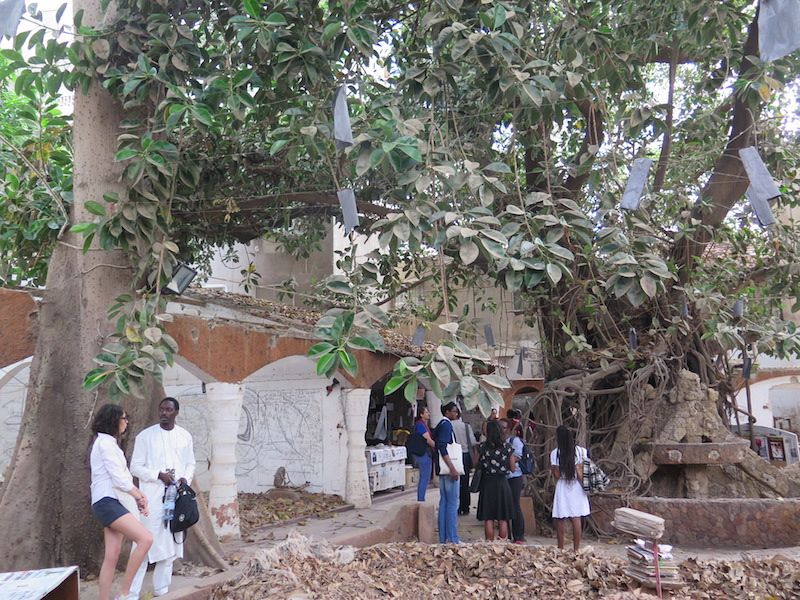From the air, all cities look like architectural models, with their little houses made with what looks like cardboard from a great distance, their little trees and little cars moving around, lighting up streets at night. As we approached the Dakar ground I noticed the illusion was actually materializing instead of vanishing, cardboard-like façades just getting closer, bordering the airport just as in Mexico City, where precariousness is the most widespread characteristic of contemporary architecture.
Yet, once on the ground, the city didn't feel like Mexico, or anywhere else I've been in Latin America. Buildings, however decimated by time and neglect, revealed an ambition of greatness – if often only a crumbling ambition – whether it was the immigration building that welcomed us, or the Ancien Palais de Justice, nerve center of the Dakar Biennial. The same could be said about almost everything I encountered in Dakar; while there is a constant similitude in everything from food to landscape, the edge of local experience felt both clearly contextualized by an ever-present and unresolved post-colonial experience that came up in most conversations and by assimilation of European references, from critical theory to language, academic lingo and music.

The seminars started with Koyo Kouoh, our host for the week, Director and Founder of RAW Material Company, a place I quickly learned to admire. In her talk, Koyo described the circumstances of the creation of RAW, and the need that she as curator and thinker had to create a space for her own practice, one that doesn't ‘illustrate politics with art but brings politics to art.’ Throughout the week, it became clear that in a context often lacking the minimal structures for the development of civil society, curatorial and artistic practice are closer to social work (not activism), both participating in everyday political struggles while aiming at affecting life with very practical actions, often reacting quickly and strategically to events near you. 'You need to dig where you stand' stated Koyo, constantly going back to the need of being political.
In between seminars, individual advisement meetings with Riason Naidoo and Maria del Carmen Carrión questioned and pushed my project proposal. In the evenings I attended 'catholic parties' where the Senegalese people would be frantically twerking on each other (men to men, women to women, women to men!); having dinner at hidden restaurants so we could have pork chops and beers in an 80% Muslim country; witnessing breathtaking ancient rituals with the spirits of the forest in the middle of the street, then walking two blocks and arriving to a world-class jazz concert; surrounding dance-offs that seemed part of a Sugar Hill Gang video so good it doesn't exist; and having the most invigorating conversations with people so different and so alike, pushing the limits of everything you thought you knew. By the time the exhilarating public symposium was over, we were all ready to say a most emotional goodbye over delicious food and drinks facing the Atlantic coast.
As the muezzins' psalmody faded off, shaken as I was after this nine-day long hurricane of an experience, I decide to build better: to be rigorous and courageous, and go out there, beyond my comfort zone of western thought (even Latin American thought) and make things happen, as we were encouraged to do.










